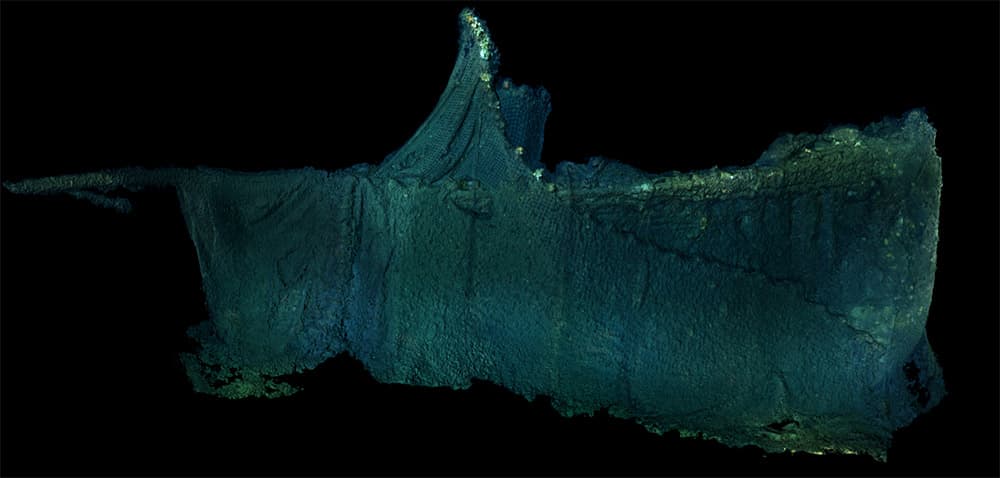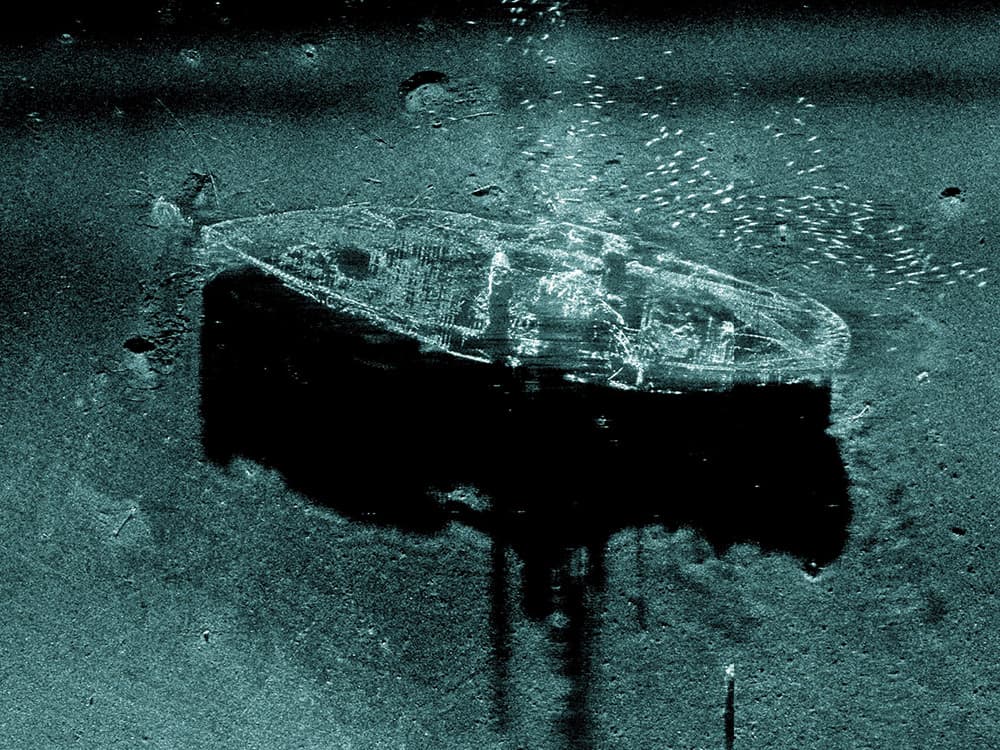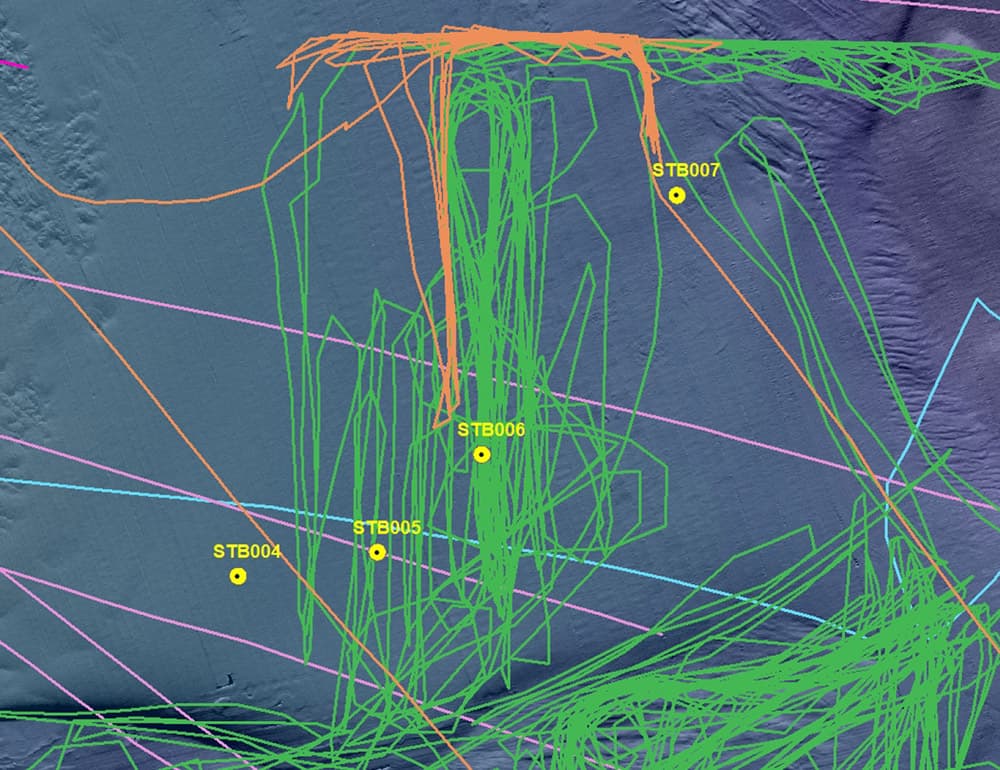Sanctuary Initiates Program to Protect Historic Shipwrecks and Fishing Vessels
By Ariel Silverman
April 2021
When policymakers face the challenges of protecting historic shipwrecks as mandated by both the National Marine Sanctuaries Act and the National Historic Preservation Act, the fishing industry and conservation interests are often at odds. But they don't have to be.
Under the National Historic Preservation Act, federal agencies are obligated to take into account the effects of their undertakings (including issuance of permits) on historic properties, including shipwrecks. Historic properties are properties that are included in the National Register of Historic Places or that are eligible for inclusion in the National Register. As part of this consideration, agencies are required to consult with state historic preservation officers, tribes, or any other interested parties to identify and resolve (i.e., avoid, minimize, or mitigate) adverse effects.
From their resting places on the ocean floor, the shipwrecks of Stellwagen Bank National Marine Sanctuary have united a variety of maritime interest groups, from divers and historians to fishing industry members on the Sanctuary Advisory Council. This group is working towards a unified goal of protecting these irreplaceable historic resources while also preventing injury to fishing vessels, their crews, and their gear. To accomplish these goals, NOAA is piloting a Shipwreck Avoidance Program (SAP), in which the sanctuary is working with NOAA Fisheries, the service that manages the nation's fisheries, to safeguard and interpret the sanctuary's rich maritime heritage and cultural artifacts. The Shipwreck Avoidance Program is an innovative program dedicated to encouraging commercial and recreational fishing vessels to voluntarily avoid the disclosed locations of select shipwreck sites. The pilot phase encompasses 11 wrecks located throughout the sanctuary.
Wrecks Offer Possibilities of Profits and Dangers
The historically bountiful and productive sanctuary waters and seafloor attract a fleet of recreational and commercial fishing vessels, including trawlers and scallop dredges. Fishing vessel captains have found that fishing close to these wrecks can bring in a profitable catch of all sorts of fish that find refuge nearby. But these benefits are countered by risks, as gear can collide with and entangle the wrecks. Not only do these incidents endanger the fishing vessel and crew while inflicting loss or damage to nets and lines; it can also lead to significant harm to the shipwrecks.
During NOAA exploratory missions, archaeologists located 47 shipwrecks in the sanctuary, and records indicate that possibly 200 more vessels, both historic and modern, lay somewhere within the boundaries of the sanctuary. Unfortunately, many of these wrecks have been damaged or destroyed by commercial fishing gear, as exemplified by the coastal steamship Portland, the sanctuary's most iconic historic shipwreck. This memorial site for all 192 passengers and crew has been impacted by fishing gear over the years.

Protecting an Irreplaceable Resource
"Sanctuary shipwrecks are windows into the past, allowing marine archaeologists to learn more about New England's maritime cultural landscapes. Through sanctuary-sponsored live and recorded programs, shipwrecks serve as the featured exhibits in a virtual underwater museum, where diverse topics, like maritime history and marine biology, can be explored. These irreplaceable resources and the information they contain cannot be restored once they are destroyed," said Ben Haskell, deputy superintendent at the sanctuary and manager of the SAP. He added that "some of our shipwrecks are memorial sites that are resting places for sailors, passengers, and crews who were lost along with their ships." Damaging or removing historic resources such as shipwrecks is prohibited in the sanctuary except if it occurs incidentally from traditional fishing operations.
Undisturbed wrecks provide other benefits. The three-dimensional structure of shipwrecks on the seafloor provides critical habitat and refuge for diverse marine life. Intact wrecks in some of the shallower waters also provide exciting destinations for divers to explore.

Changing Course on Shipwreck Management
NOAA is required to protect shipwrecks and other maritime heritage resources under the National Marine Sanctuaries Act and the National Historic Preservation Act. At the present time, six sites in the sanctuary, encompassing seven shipwrecks, including Portland, have been listed on the National Register of Historic Places, a National Park Service Program dedicated to identifying, studying, and protecting America's historic properties.
Prior to piloting the innovative Shipwreck Avoidance Program, shipwreck locations in the sanctuary were not disclosed publicly because of the potential of damage or removal/displacement of artifacts. After recognizing the increased threat of inadvertent damage from fishing activities, NOAA decided to change its previous policy of non-disclosure and publicize the locations of select historic shipwrecks identified at high risk of harm from contact with fishing gear.
In return, NOAA requests that fishing vessels voluntarily avoid the designated sites and divers refrain from removing any artifacts, which is illegal. During the pilot phase, officials will monitor voluntary compliance to determine if disclosing wreck locations is a more effective policy than nondisclosure. A report on the results of the pilot phase of the Shipwreck Avoidance Program will be produced prior to the 2022 fishing season.
Frank Mirarchi, a retired trawler fisherman and Sanctuary Advisory Council member, supports the voluntary avoidance program. "I have lost two nets and done considerable damage to several others throughout my career by encountering random pieces of wreckage which are scattered on the seabed" he said. "Under poor weather conditions, entangled gear can capsize a boat, jeopardizing the crew's safety," he added.
Technology Aids in Assessing Compliance
Implementing this non-regulatory voluntary compliance pilot program like the Shipwreck Avoidance Program is an effort to balance the need to protect our nation's maritime heritage with sustaining commercial fishing. Haskell noted "We know there is extensive fishing activity in areas of the sanctuary with large numbers of shipwrecks. This program gives the fishermen the opportunity to avoid the dangers associated with their gear interacting with shipwrecks while, at the same time, protecting these historic resources without the implementation of an added layer of regulations."

Looking to the Future of Sanctuary Shipwrecks
The future of the Shipwreck Avoidance Program and the sanctuary's shipwreck sites are still uncertain, according to Haskell. He reports that if the program is successful at encouraging voluntary avoidance, NOAA will likely disclose the locations of more sites. "By working together towards a shared goal, we can all preserve these irreplaceable resources, promote safety, and sustain fishing in sanctuary waters," he said.
Mirarchi agrees that voluntary compliance has the potential to be very effective. "With the advent of more precise navigation tools like GPS, fishermen can safely avoid a known point under ideal conditions," he commented. "Disclosing wreck locations will help fishermen avoid bad hangs and share that information with others."
For more information on the Shipwreck Avoidance Program or to report a shipwreck location, contact: Ben.Haskell@noaa.gov.

